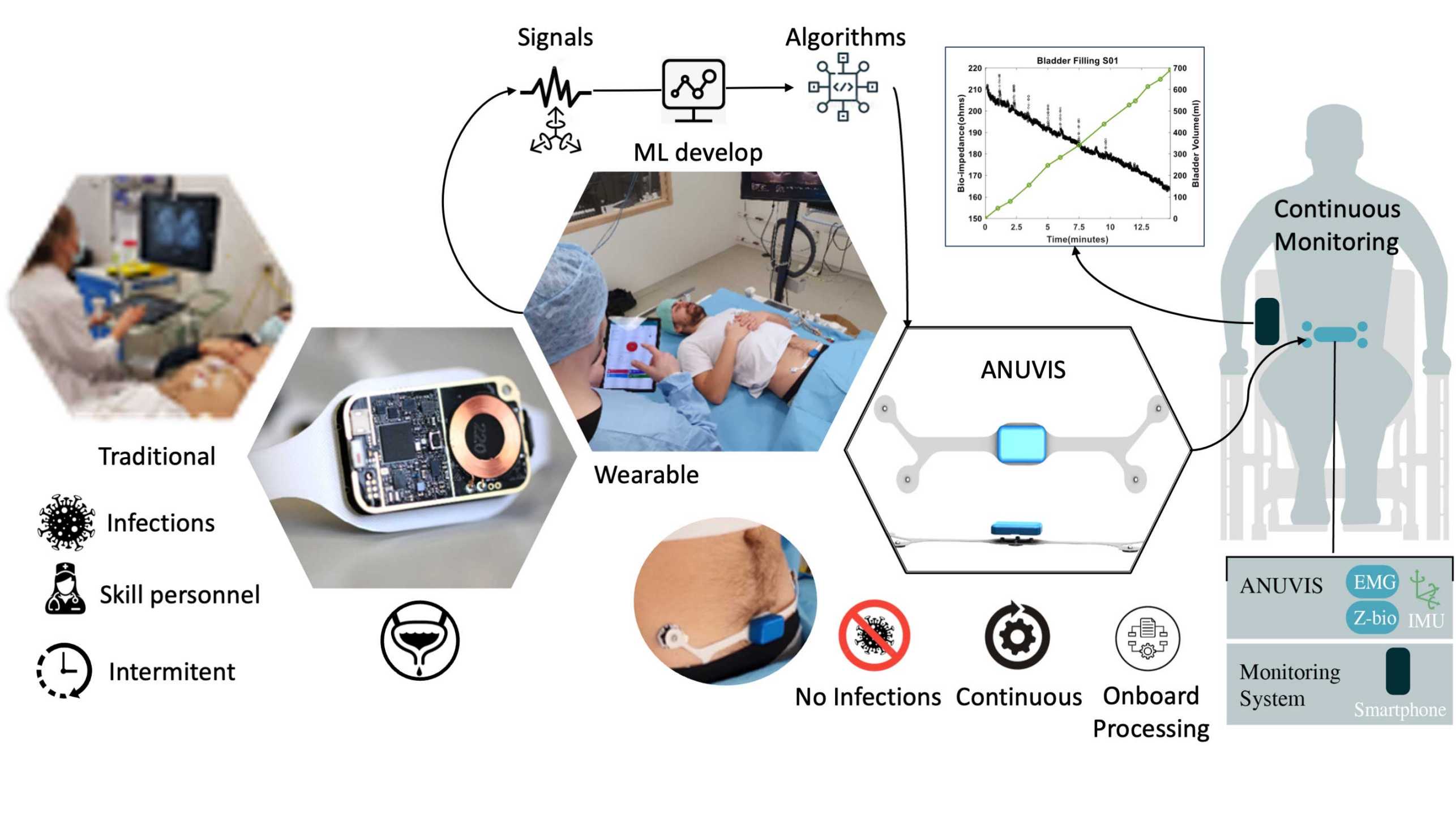Remote Continuous Bladder Function Monitoring for Ambulatory SCI
Spinal cord injury (SCI) leads to a partial or complete loss of neural control of the function of the lower urinary tract, termed “neurogenic lower urinary tract dysfunction” (NLUTD). As NLUTD frequently leads to renal damage, the assessment of bladder function is mandatory in persons with SCI to detect risk factors and to tailor and monitor the treatment of NLUTD.
Monitoring of urine volume is required in many conditions beyond SCI as a significant parameter to assess bladder and kidney function. However, current methods require prolonged catheterization which is associated with a high risk of infection while other options such as ultrasound measures are highly time- and resource intensive. Therefore, we believe that an automated method for bladder volume assessment that is non-invasive and can monitor several bladder fillings cycles during normal activity will present a better assessment of bladder function and provide a tool for personal management especially in the first years after SCI.
Several methods for bladder assessment exist, from devices based on ultrasonic scans with a stationary system such as the BladderScan® BVI 9400, and the Prime®. On the other hand, portable non-invasive bladder volume methods based on ultrasound systems can only provide a binary state of the full or empty bladder. Neither ultrasound measurements nor near-infrared spectroscopy could yet diagnose NLUTD adequately.
One promising portable method for bladder volume measurement is through Bioimpedance (BI), at the ETHZ-PBL Center led by Dr Michele Magno this method has been extensively investigated [Dheman et al. 2020, 2021, 2022] going through several designs and sensor implementations. In this project, we plan to further exploit BI sensing fusing them with other novel sensors to improve the robustness and accuracy in real field conditions.
This project aims to validate the feasibility of using this new wearable device in the SCI population and gather data to re-design the system appropriately for usage in community settings. This sensory system based on the prototype [1] will measure the bladder filling process through local bio-impedance of the lower abdomen nd proceeds to process the data with a low complexity algorithm to provide an artefact-corrected, accurate, and quantifiable bladder volume.
We will evaluate and re-design the wearable system to translate it into the daily lives of wheelchair users and achieve a non-invasive sensor to measure changes in bladder volume.
Founded by the ETH-SPS Digital Transformation in Personalized Health Care for SCI Project
References
Working Group
- Sabrina Amrein (SCAI-RA)
- Dr. Med. Jürgen Pannek (SPZ)
- Dr. Kanika Dheman (PBL-ETHZ)
- Dr. Michele Magno (PBL-ETHZ)

